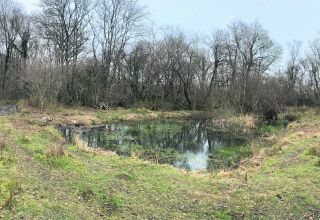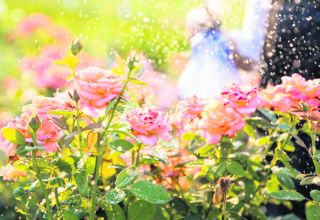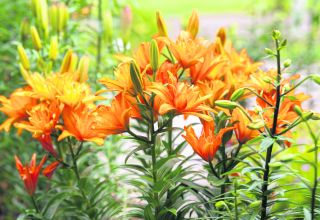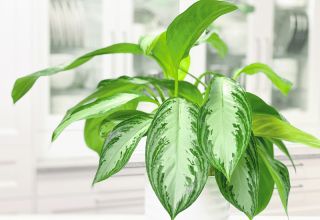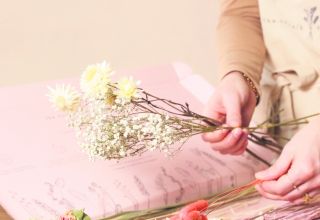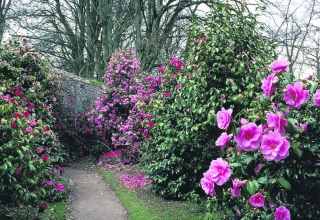
Spring gardens throughout the county are about to burst into colour but at one stage they were a plant too labour intensive to survive
Some of the most famous gardens in Cornwall- Caerhays, Tregothan, Trewithen and many more all reflect the reason the county has a special association with camellias.
It’s a garden classic plant, one of the world’s most popular and more and more now associated with Cornwall in the spring.
Cornish Gardens are a delight at all times of the year. The gentle climate, particularly in the southern coastal areas, enables gardeners to grow flowers and shrubs that most of Britain would struggle with in the open garden.
Camellias thrive in an acid soil, with a pH between 5 – 6.5- and its one of the secrets why they flourish in Cornwall.
The soil needs to be free draining; this is almost more important than the acidity and many camellias will grow for years in a more neutral soil if their roots are not waterlogged over the winter months.
There can be a problem with nutrient take up from the soil where the pH is higher, and over time, a once healthy camellia can suffer from chlorosis. The main symptom of which is the yellowing of the foliage, particularly along the leaf veins.
Most camellias are happy in cool conditions and don’t need winter protection. However some varieties, Camellia japonica for example have a habit of retaining their dead and dying blooms on the bush. This high maintenance requirement gave early collectors the impression they were tender. The only way to deal with this is to dead-head each bloom by hand – a very time consuming activity.
It is no wonder then that a shortage of garden staff in the early twentieth century led to a decline in interest in the plant.
It was the role of Cornish gardens to find a solution. A member of the Royal Horticultural Society John Charles Williams of Caerhays was fascinated by hybridisation. He was already growing camellias outside Caerhays when he crossed Camellia japonica with Camellia saluensis and this new strain Camellia x williamsii proved hardy and had the advantage that it dropped its flowers after blooming. So once again gardens became filled with ornamental plants and after the Second World War camellias become popular again.
Going further back, camellias were not introduced to Europe until the 18th century, and they have a centuries-old history of cultivation and hybridisation in the East. In Japan they were widely planted in the gardens of samurai and monasteries by the 16th century.

Most camellias are happy in cool conditions and don’t need winter protection.
Some of the most famous gardens in Cornwall- Caerhays, Tregothan, Trewithen and many more all reflect the reason the county has a special association with camellias.
It’s a garden classic plant, one of the world’s most popular and more and more now associated with Cornwall in the spring.
Cornish Gardens are a delight at all times of the year. The gentle climate, particularly in the southern coastal areas, enables gardeners to grow flowers and shrubs that most of Britain would struggle with in the open garden.
Camellias thrive in an acid soil, with a pH between 5 – 6.5- and its one of the secrets why they flourish in Cornwall.
The soil needs to be free draining; this is almost more important than the acidity and many camellias will grow for years in a more neutral soil if their roots are not waterlogged over the winter months.
There can be a problem with nutrient take up from the soil where the pH is higher, and over time, a once healthy camellia can suffer from chlorosis. The main symptom of which is the yellowing of the foliage, particularly along the leaf veins.
Most camellias are happy in cool conditions and don’t need winter protection. However some varieties, Camellia japonica for example have a habit of retaining their dead and dying blooms on the bush. This high maintenance requirement gave early collectors the impression they were tender. The only way to deal with this is to dead-head each bloom by hand – a very time consuming activity.
It is no wonder then that a shortage of garden staff in the early twentieth century led to a decline in interest in the plant.
It was the role of Cornish gardens to find a solution. A member of the Royal Horticultural Society John Charles Williams of Caerhays was fascinated by hybridisation. He was already growing camellias outside Caerhays when he crossed Camellia japonica with Camellia saluensis and this new strain Camellia x williamsii proved hardy and had the advantage that it dropped its flowers after blooming. So once again gardens became filled with ornamental plants and after the Second World War camellias become popular again.
Going further back, camellias were not introduced to Europe until the 18th century, and they have a centuries-old history of cultivation and hybridisation in the East. In Japan they were widely planted in the gardens of samurai and monasteries by the 16th century.


